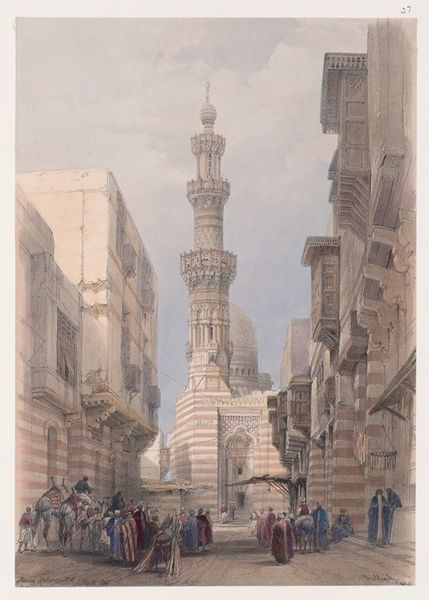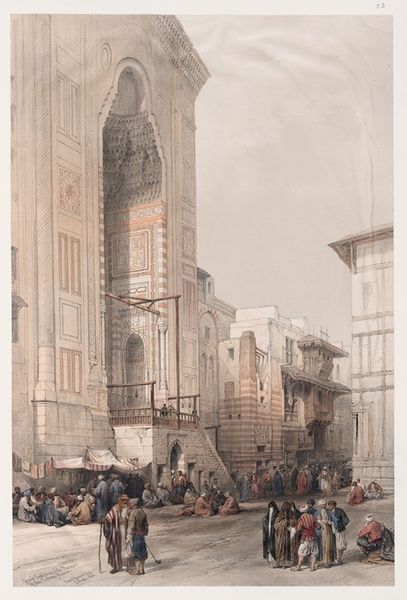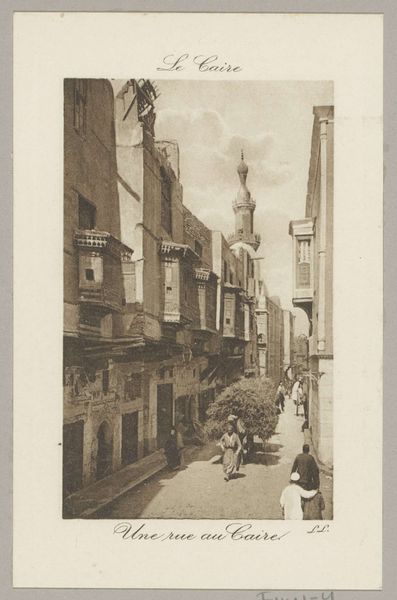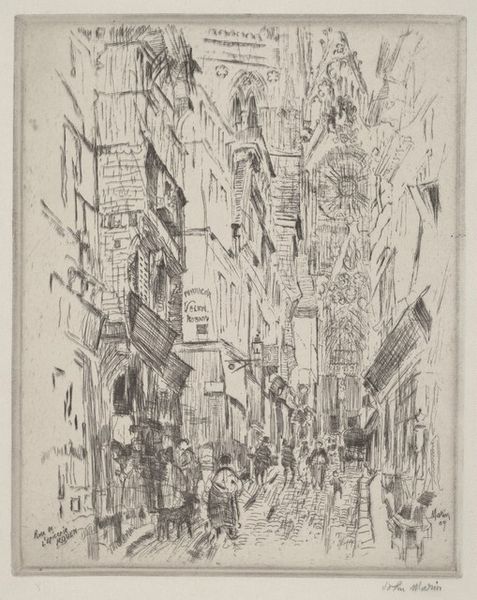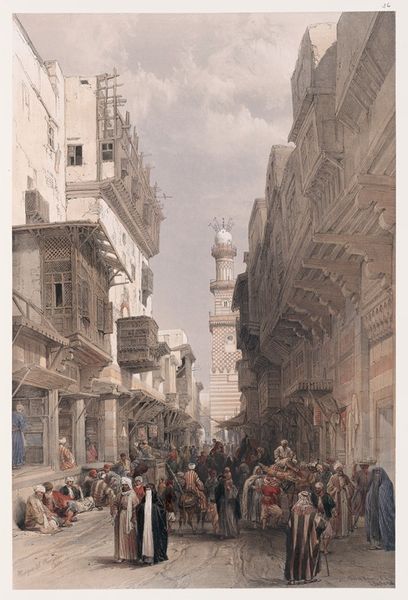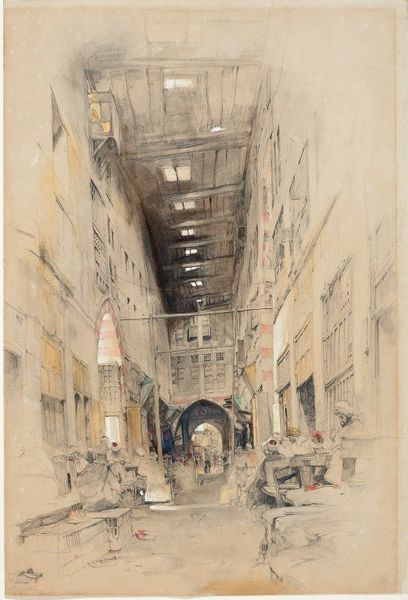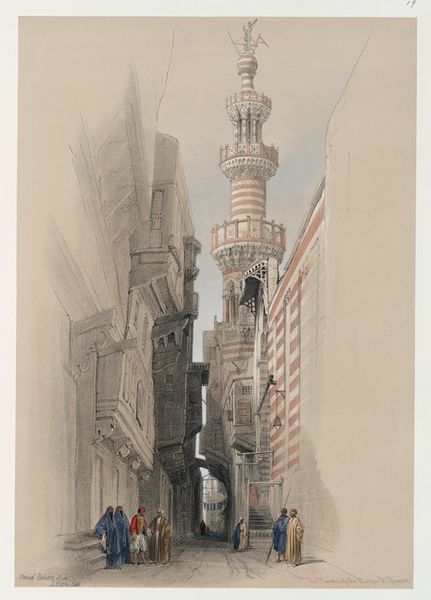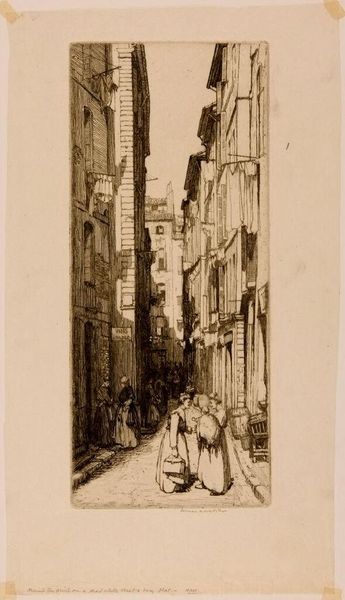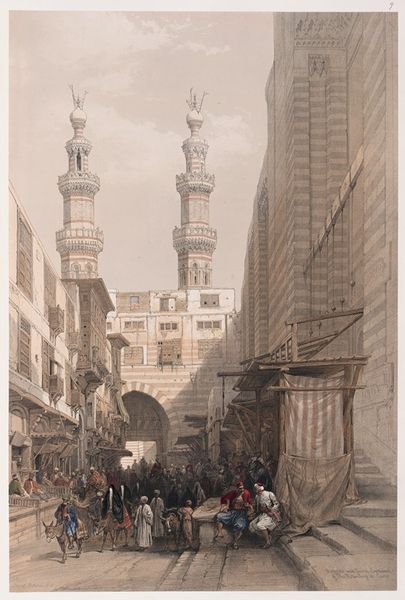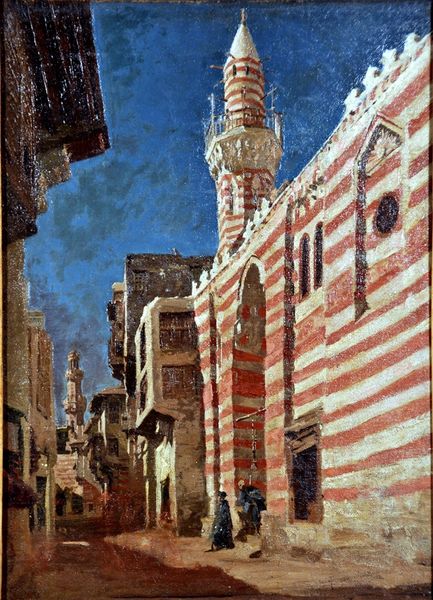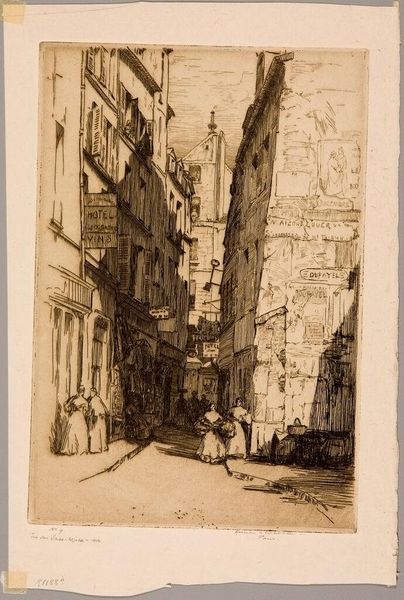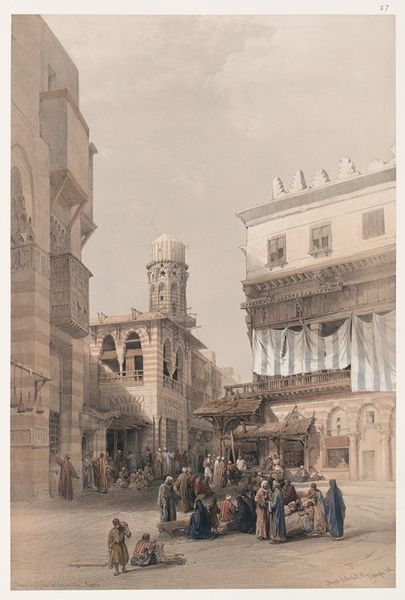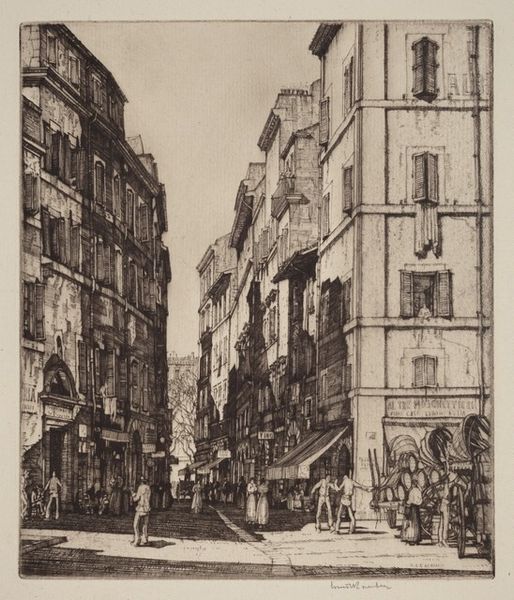
Dimensions: support: 247 x 145 mm
Copyright: CC-BY-NC-ND 4.0 DEED, Photo: Tate
Editor: This is William James Müller's watercolor, "Street in a Near Eastern Town". It depicts a busy street scene, and I'm struck by the contrast between the detailed architecture and the quickly sketched figures. What stands out to you? Curator: The materiality speaks volumes. Consider the global trade networks supplying Müller with his paper and pigments. The finished work then re-enters circulation, shaping perceptions of the "Orient" for a consuming European audience. What labour went into this piece, and whose gaze does it reflect? Editor: That's a powerful point. It makes me consider the social context of both its creation and reception much more deeply. Thanks! Curator: Indeed. By focusing on production and consumption, we unravel the complex relationship between art, labour, and cultural exchange.
Comments
tate 7 months ago
⋮
http://www.tate.org.uk/art/artworks/muller-street-in-a-near-eastern-town-n02352
Join the conversation
Join millions of artists and users on Artera today and experience the ultimate creative platform.
tate 7 months ago
⋮
Müller was one of the first British artists to go to Egypt, travelling there in 1838–9. He wrote that ‘of all the spots I had ever seen for the artist’ this sort of street scene ‘would prove the most fertile for his pencil’. The Islamic world had long fascinated Western audiences, though they had generally been satisfied with recycled fantasies. Müller’s sketch represents a new, eye-witness approach. By the late 1830s biblical archaeology, and an escalation of European diplomatic and military activity in the area, fuelled demand for more convincing documentary images of the Middle East. Gallery label, September 2004
